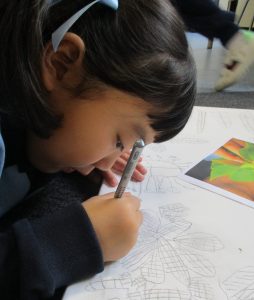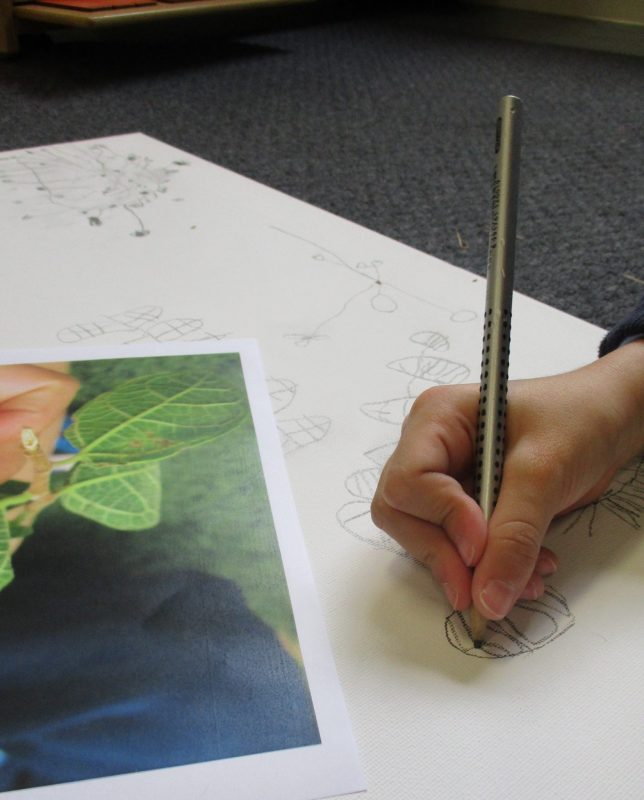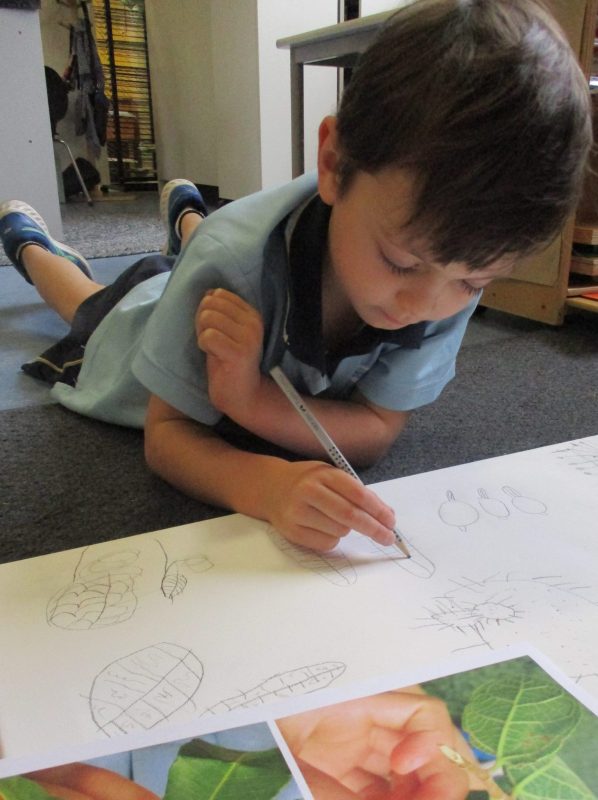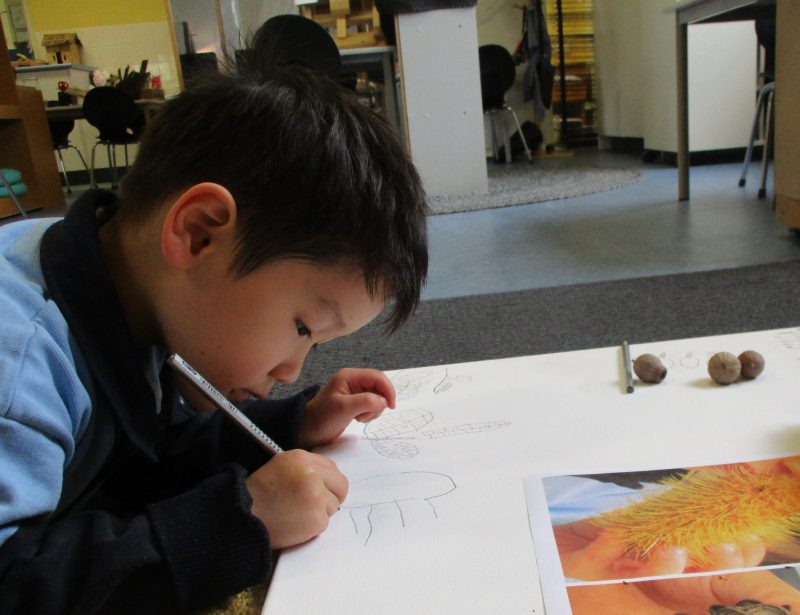The Joy of Collaboration

In recent times, brain research has demonstrated support for Jean Piaget’s constructivist learning theory; that individuals construct their own knowledge through interactions with their environment, with objects and other people (Tunks, 2012). At Campbell House, this theory underpins the work educators undertake with young children, and we strive to create opportunities for children to work together in both small and large group learning experiences.
The children engaged in an incursion last term about Indigenous and edible plants, and completed independent paintings and verbal reflections which have been displayed in the classroom. Educators wanted to condense this work, creating space for other thinking and learning to be revisited and relaunched, as well as providing an opportunity for collaborative learning. Educators intentionally purchased a canvas for a combined artwork where each child could contribute their learning about the plants. The children selected what they would like to graphically represent, negotiating with peers for space, discussing elements of the plants and their drawings, and determined where the best place would be for their work.

The children in the Banksia Room engaged in an incursion last term about Indigenous and edible plants.
Observing the response of their classmates and educators to their drawing also helps to reinforce the children’s understanding that drawing is a powerful method of communication. The canvas was on display during Dr Jane Goodall’s visit, connecting with her work around the natural environment.





